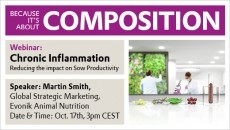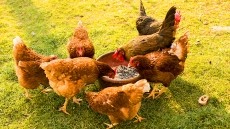US company looks to indoor production of cattle forage

The Utah-based agricultural technology company is beta-testing a fully-automated, feed production system called the Grōv Pod, a fully automated indoor growing system for commercial-scale animal feed.
The company is hoping to revolutionize the global animal feed marketplace with vertical farming for beef herds. It said the Grōv Pod uses 98% less water and much less land, due to the vertical nature of the stacked LED growing shelves. This kind of controlled environment agriculture (CEA) enables year round growing with multiple harvests achieved through exact measurement and management of nutrients, light and temperature.
The technology grew out of a project focused on raising plants as ingredients for nutraceuticals and food products to prevent challenges from contaminates, said Brent Petersen, director of marketing and communications, Grōv Technologies.
The Grōv Pod, which is in beta testing, produces a daily output of more than two tons of wheatgrass, equivalent to the annual approximate yield of at least 55 acres of farm land, said the company. The system has been designed to require minimal labor and utilizes patented low-heat LED technology, robotic seed-to-harvest systems and scientifically proven growing protocols.
“We call it a high-density nutrient because we’re able to control the variables in the growing of the wheatgrass,” Petersen told FeedNavigator.
A demonstration unit is being used currently to help feed about 17,000 animals including 7,500 milking cows, he said. The initial focus is on providing feed for use by dairy and beef producers.
LED technology
The system uses LED lights that generate less heat, he said. “That’s the aspect of our technology that’s patented.”
The lighting system helps support plant growth and higher yields, while a computer program is used to monitor and optimize production, he said.
The idea is that the turn-key growing platform will allow for predictable and highly nutritious feed year-round, despite the effects of rapidly changing climates on traditional growing cycles. The technology could provide value to farmers globally, those bearing the brunt of stressed water, arable land, and climate conditions or even transportation, said Petersen.
Each pod is about 25 feet by 30 feet and 25 feet tall (7.6 x 9.1 x 7.6 meters) or has a cubic footprint of about 15,000 cubic feet, he said. How many units would be installed at a facility depends on how much production is needed.
“We meet with the producers, and the farmers, and go through their needs, and what they’re doing, and we work within our manufacturing structure to see what’s required,” Petersen added.
In terms of inputs, the system needs water and energy and the facility used to house the pods has to be at the right temperature and humidity, he said.
Grōv Technology is looking at a range of markets for the growing system including countries in North America, Asia and the Middle East, said Petersen. “The economics are still very new on this,” he added.
“As the climate changes, the risks to feed security are more present and we’re going to need technologies like this to move forward,” he said.
The system is also intended to address some sustainability concerns including land and water use and reducing the emissions related to feed transportation, he said.

















